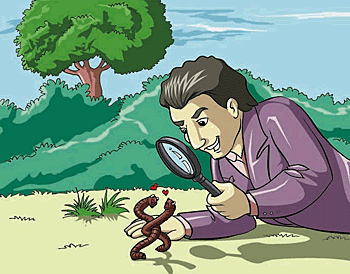scopo-, scop-, scept-, skept-, -scope-, -scopy, -scopia, -scopic, -scopist
(Greek > Latin: see, view, sight, look, look at, examine, behold, consider)
2. A form of machine for exhibiting animated or life-like pictures.
Eadweard Muybridge spent most of 1881-1882 in Paris and London exhibiting the zoopraxiscope and lecturing on animal motion.
The zoopraxiscope (pronounced ZOH uh PRAKS uh skohp), invented by the British photographer Eadweard Muybridge and first shown in 1879, was a primitive version of the later motion picture devices which worked by showing a sequence of still photographs in rapid succession.
Muybridge, perhaps best known today for his sequence of photographs of a race horse in motion (which proved for the first time that at top speed all feet leave the ground), studied photography in the early 1860s with daguerrotypist Silas Selleck and later achieved recognition for his photographs of the Yosemite Valley and other scenes of the American Far West.
The zoopraxiscope emerged out of his studies of motion as shown in sequences of still photographs. His eleven-volume work, Animal Locomotion, published in 1887, contained over 100,000 photographs. In 1893, he lectured at "Zoopraxigraphical Hall" at the World's Columbian Exposition in Chicago.
The zoopraxiscope, along with the zoetrope and the thaumatrope, could be considered forerunners of today's motion display technologies (including the "animated GIF" and "video display technologies" such as streaming videos), all of which create an effect of motion by presenting discrete but closely-related images one after the other.
2. Etymology: from Greek zoo-, "animal" + -scopy, "viewing, examining, observation."

Cross references of word families that are related directly, or indirectly, to: "appear, visible, visual, manifest, show, see, reveal, look": blep-; delo-; demonstra-; opt-; -orama; pare-; phanero-; phant-; pheno-; spec-; vela-, veal-; video-, visuo-.

